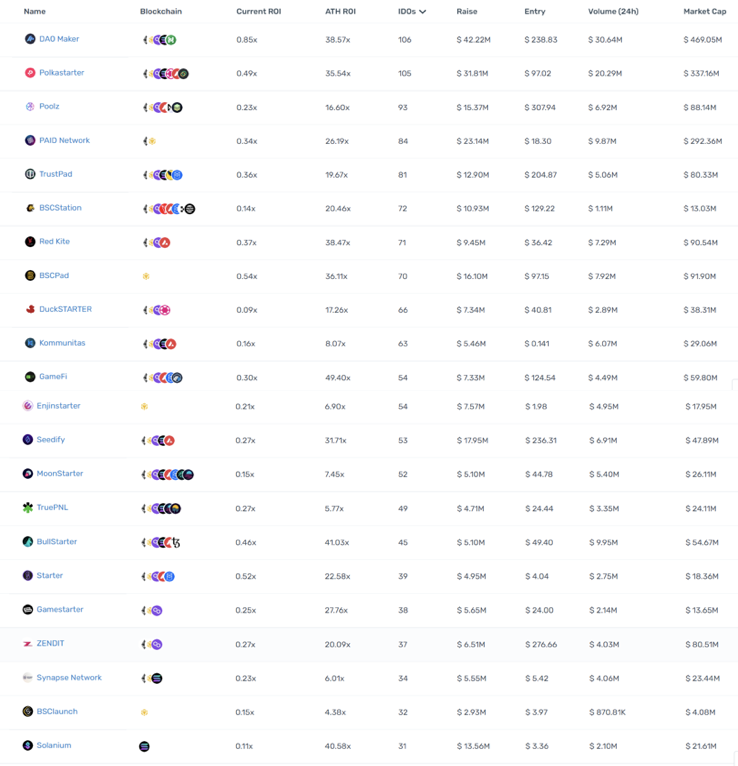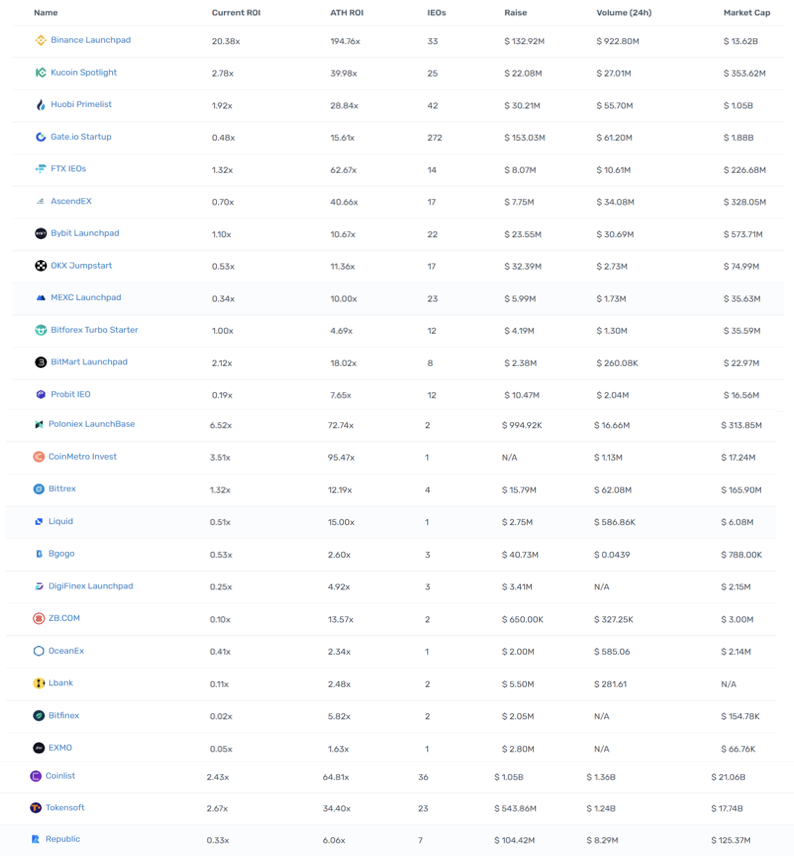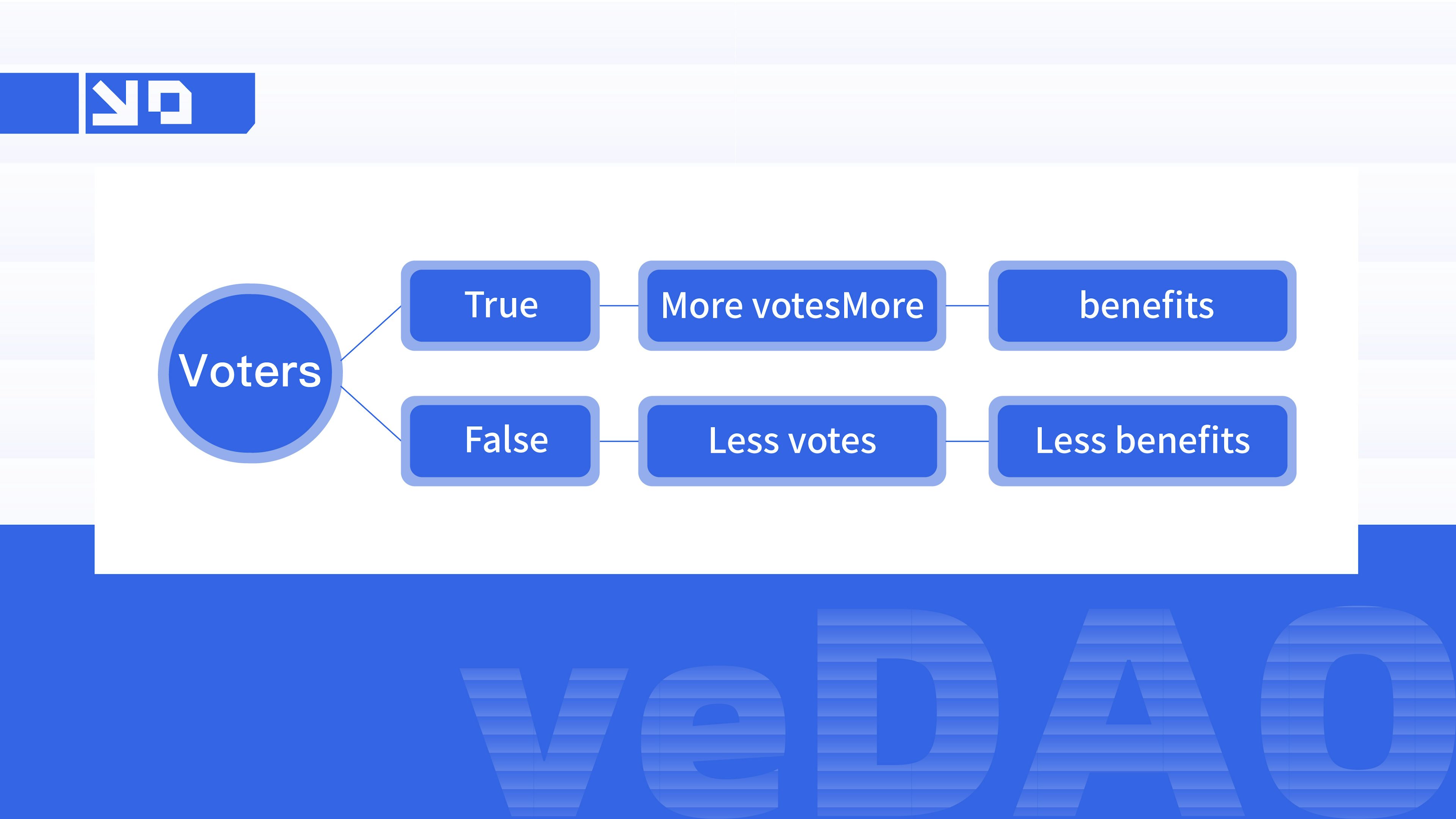1. Features of Web3 venture capital
Web3 venture capital is mainly a form of financing by providing financial support to Web3 start-ups and obtaining shares in projects, mainly in the form of holding the token of projects or agreements. Web3 venture capital is generally invested in early Web3 projects or agreements that are considered to be emerging, burgeoning, and have high potential or have exhibited high growth. It is uncertain whether there are real demands for new projects and whether they can be accepted by the market. Hence, Web3 venture capital has many uncertainties, resulting in great risks to the investment and its return. However, it is undeniable that high risks in Web3 venture capital come with high returns on investment. Previous data indicate that Web3 venture capital has largely severalfold to a thousand-fold return on investment.
2. The role of Web3 venture capital
The Web3 industry can’t rise rapidly without venture capital, which is the catalyst for Web3 innovation and technological progress. As an equity investment that can take high risks and seek high returns, venture capital can leverage its financing role by providing funds for Web3 technologically innovative activities and projects or agreements which hugely needs capital and bring both high risks and high returns. Web3 innovation is cost-effective. Projects or agreements related to Web3 technology innovation are in need of capital investment to support its research and development and operation. In addition, since Web3 technology innovation is still in its infancy, its trajectory and growth are not yet clear and the success or failure of Web3 venture capital is facing huge uncertainty. As a special financial intermediary, Web3 venture capital can obtain part of the Token. In addition to sharing losses, it can also share the benefits of technological innovation. Therefore, driven by the potentially high income of Web3 technological innovation, Web3 venture capital serves as a financing form to solve the financing constraints in Web3 technological innovation and can provide basic resources for it, thus better supporting the development of technological innovation. Of course, projects or agreements, if having obtained private equity venture capital, can also have access to unique non-capital value-added services, including providing strategic planning, development and implementation, marketing, financial budget, human resource management and other advisory advice. Its screening, supervision, guidance and certification help realize Web3 innovation.
3. Two types of fundraising
Web3 venture capital comprises private placement and public auction based on where the industry is.
3.1 Private placement
Private placement is to raise funds through non-public offering among a few specific investors, including institutions and individuals, which is similar to angel investors in traditional finance; Web3 projects or agreements can be invested by private capital, such as A16z, Paradigm, Coinbase Ventures, Polychain Capital, Pantera Capital, Sequoia Capital and other centralized venture capital funds, as well as some famous decentralized investment DAOs which is currently in rapid development. First, the projects are linked to a long-term partner - that is, investors can provide connections, technical solutions and additional suggestions in operational governance. Private investors are generally major shareholders who will not sell project tokens as quickly as retail investors because they can usually unlock it after a period ranging from two to four years, including a one-year lock-in period; Secondly, the endorsement by the well-known private equity investor is also an excellent marketing point for the projects, bringing good marketing value to the projects. For example, the operation mode of a16z: marketing team (helping attract traffic)+talent team (helping recruit talents)+market development team (helping acquire customers)+a research team (helping solve problems)=a successful project or agreement invested.
However, if projects raised funds through private placement, when the tokens are converted into stable currency at a certain discount of the market price, the handsome discount generally fluctuates in the range of 30% - 50%. Although tokens in private placement generally have an unlock period and a lock-in period, for ordinary investors in the community, the value of the tokens is significantly diluted by the market value, so they will feel the difference in market value is robbed in advance. They are also worried that the Token will be monopolized since there are very limited participators, and the Token price will be easily manipulated; the well-known Web3 venture capital institutions are basically centralized entities with different labels and it is difficult for them not to secure high premium income through manipulation and speculation for their own interests, which is contrary to the original mission of decentralization, user ownership and common prosperity. There are advantages and disadvantages in choosing private placement - its essence is to hand profits to the capital market in exchange for their cooperation, stability and marketing value.
3.2 Public auction
The funds raised by public auction are carried out by means of public offerings among the vast number of social investors, that is, the unspecific investors in the society. Raising funds by public auction in Web3 is open, small-scale and public. It refers to the behavior of the blockchain digital assets generated by Web3 projects or agreements for the first time in the form of asset digitization and raising general digital assets by means of product anchoring, asset bonds, and crowdfunding.
This includes IXOs in Web3 industries like ICO, IEO, IDO, ITO, IWO, IGO and INO, which are similar to initial public offerings (IPO) in traditional finance. See the following table for details.
ICO - Initial coin offering - the first token issue. It's the first way to raise funds in cryptocurrency. The projects will raise funds from the community itself rather than through a third party.
IEO - Initial exchange offering. It's the next step following ICO and also a fund-raising project, but requires a third party, namely, a centralized exchange like Binance.
IDO - In a narrow sense, IDO means initial DEX offering, namely decentralized exchange, which is decentralized exchange. IDO is a form of fundraising through a third-party fundraising platform. Different from IEO, its tokens will be listed on such decentralized exchanges as Uniswap, SushiSwap, PancakeSwap, Balancer, PolkaStarter, DuckStarter, DODO, Bounce, Mesa, etc; in a broad sense, IDO also means initial digital assets offering, that is, the first blockchain digital asset offering. Broadly speaking, the definition of IDO coincides with that of IXO.
ITO - ITO is the initial twitter offering. Initiated by Mask Network, the Web3 privacy product, it leverages inclusive Twitter to directly use the huge traffic on Twitter.
IWO - Initial wallet offering, allows new projects to raise funds in platform currency or other forms on the wallet platform, and users can directly access the application through the wallet.
IGO - Initial gaming offering is similar to other projects. Games also need to manage tokens, currencies, etc., so they can also raise funds by selling these tokens. With the development of blockchain games, IGO is considered to be the next trend in the cryptocurrency market.
INO - Initial NFT offering means the platform for the first issuance of non-homogeneous tokens. It's the world's first non-homogeneous token issuance platform based on xNFT Protocol and can issue NETs on BSC, HECO, and ETH, including the popular ecosystem in the current market.
The public auction allows project providers to quickly raise diversified funds in the free market, and also obtain a large number of funds at a low discount. The auction itself can also be used as a marketing campaign to increase recognition and promote the agreement in the market. Compared with private fundraising, fundraising via public auction is also more in line with the spirit of Web3's decentralization and user ownership, so it is easier to solicit support from communities.
The success of the public auction depends on quorum sensing and requires large operating efforts to stimulate sufficient demands in the market. Public auction has less or no requirements for the unlock period and lock-in period. Therefore, the selling pressure brought by the auction needs to be taken into consideration. The public auction mostly targets retail investors. In the current market environment, retail investors are difficult to become long-term and stable token holders like institutional investors. These are the problems faced by projects or agreements when they choose to raise funds through public auctions.
Currently, public platforms roughly include comprehensive CEX, DEX platforms and centralized and decentralized auction platforms with specialized services for public auction (see Figure 2 for details). The DEX platform can provide a series of functions for project providers from the issuance of tokens to the building of liquidity; The special auction platform can provide a variety of token issuance and auction strategies for the project providers, but it cannot directly create a liquidity pool for tokens. The current public auction platform also has its own characteristics in terms of price discovery mechanism, whitelist mechanism, entry mechanism, etc., which can basically meet the diversified needs of the project providers for the first public auction.


Data source: https://cryptorank.io/fundraising-platforms/ico
Most auction platforms use auctions to issue tokens in the form of auctions by the fixed exchange rate, Dutch auction, batch auction, etc.
4. DAO
The revolutionary nature of Web 3.0 lies in the establishment of a new social cooperation model and benefit distribution mechanism. This community-based ecosystem co-prosperity model is characterized by an open ecosystem, co-prosperity, and autonomy in the core link. This ecosystem co-prosperity model is based on DAO as a new democratic corporate system.
DAO, the decentralized autonomous organization, is a digital world organization form based on blockchain technology. Its organization rules are implemented by distributed programs, which can unite the interests of the participants and jointly achieve organizational goals.
DAO can also be referred to as a community based on aggregated consensus mechanism for a specific purpose of collaboration. DAO is a new governance community based on blockchain technology, and an organizational form to help project financing and benefit sharing. Compared with the traditional corporate organizational form, DAO boasts decentralization, high autonomy and organizational cooperation.
Based on the current overall ecosystem, DAO includes DAO infrastructure and application-based DAO. Application-based DAO also comprises donation-type DAO, investment-type DAO, agreement-type DAO, service-type DAO, social DAO, collection-type DAO, media-type DAO, etc according to different collaboration purposes and functions of the DAO organization.
The governance framework of DAO mainly focuses on the two core steps: how to coordinate and how to make decisions. How to coordinate roughly includes on-chain proposal governance and off-chain proposal governance. As we all know, the core decision-making approach on DAO is voting, so how to make decisions focuses on which voting mechanism to be adopted. The governance of on-chain proposals is the most basic link in the governance of DAO. The decentralized governance is implemented by smart contracts, and the governance mechanism is weaved into the code. Usually, the decision is made through the vote of token holders. Off-chain proposal governance is an addition, which usually uses informal community discussions under the chain to avoid excessive use of resources on the chain.
One token for one vote (1T1V) is the simplest voting mechanism of DAO, but this voting mechanism has many defects and requires long-term continuous iteration. It’s common sense that traditionally, a decentralized community needs more than 50% of token holders to approve the governance scheme. However, this leads to several problems: 1. Not all participants have an interest in engagement, especially those with low shares; 2. The voters are inexperienced because most of them are ordinary crowds while the capable people had no right to speak; 3. The proposal has no priority in the token voting mechanism, leading to low voting efficiency.
Therefore, some new voting solutions have emerged to solve these problems, such as mobile democracy and knowledge extractable solutions that can enhance the weight of voting and decision-making from experts; Conviction voting and weighted voting are important for voters themselves. On the whole, Web 3.0 cannot skip various problems in the decision-making mechanism in the real democratic society, but rather is a reflection of the real society. Therefore, how to ensure the fairness, efficiency and professionalism of the decision-making will be the direction of long-term discussion and iteration.
DAO is an organizational framework applicable to any field. Its core feature and purpose is decentralization. The Web3 venture capital can also be well applied to the DAO organizational framework. Next, we will specifically analyze the community co-prosperity model of veDAO - the Web3 venture capital project.
5. Community co-prosperity model on veDAO
veDAO: In the way of DAO, human intelligence and decision-making ability will be brought to the on-chain world as a new type of productivity, and the human collective that inspires the hive mind will continue to make correct decisions. VeDAO is a community built for value discovery. A collection of Web3 venture capitalists created a decentralized autonomous organization (DAO) to screen opportunities for management income farming. Its vision is to provide one-stop Web3 venture capital and fund-raising services. Using game theory, veDAO has built a win-win market that includes Web3 start-ups, DAO community and investors. The DAO community screens the best Web3 start-ups for investors to address the problem of information asymmetry in Web3 venture capital. The organizational community proposes the best Web3 venture capital strategy to solve the core problem of DAO productivity in investment.
Innovation in VeDAO community co-prosperity model:
-
In terms of implementation, veDAO gradually selects real talents through a mechanism similar to the imperial examination system, builds a world-class expert team, and creates a continuous iterative signal and decision-making system through appropriate punishment and incentive mechanisms. It enables the DAO to continuously provide the global optimal investment strategy.
-
In decentralized investment and financing, veDAO is the only project that focuses on how to choose the best investment project. In fact, how to make the best decision is the most essential issue for Web3 venture capital.
-
Based on the judgment of the future paradigm shift of human social organization, veDAO redesigns the human, investment information and decision-making mechanism, and brings human intelligence and decision-making ability to the on-chain world as a new type of productivity, which can better stimulate individual and collective value discovery.
-
Based on the rationality and values of openness, equality, competition and merit, veDAO is the only project in the market to gradually select real talents through a mechanism similar to the imperial examination system.
-
Through the capability indicator evaluation and layering mechanism, veDAO aligns decisions that maximize the interests of the individual investor decisions which maximizes the long-term interests of the system - that is, veDAO prefers high-quality targets with high yield and high sustainability.
veDAO shapes a tripartite market:
(1) Web3 start-ups: Fundraisers submit financing applications, and the DAO will vote to decide whether they can go online.
(2) Angel investors: Web3 venture capital participants.
(3) DAO: Scouts, wizards, and investment strategy development members.
All participants in the ecosystem share the same interests, mutual benefits and win-win results. The fact that the greater the contribution, the larger the income help offer consistent incentives.
veDAO has two sets of game theory structures to ensure that the interests of scouts and wizards are long consistent with those of veDAO users. The projects submitted by the scouts will get more votes from the wizards (whether they vote for or against), and hence the scouts will get more rewards. Their rewards are linked to the collective performance of wizards. The wizard member competes according to the game-based algorithm and contributes to the discovery of new projects, research, decision-making, planning and community building.
The idea of veDAO is to reward the best performers. Wizard members get rewarded in two cases: the project they support becomes a project with n-fold returns; the project they oppose turns into the one with much lower returns at a rate of N%. This design aims to encourage the wizard member to vote responsibly, independently, and with high confidence. Only the wizard member with the best judgment can become a winner in the Web3 venture capital game, thus obtaining the most rewards.

Follow Us
veDAO, led by DAO, is an investing/financing platform. Utilizing the wisdom of the masses, the platform gives full play to the elite insight. The platform, finding and supporting the most potential projects through the voting mechanism, builds a community, composed of financiers, investors, and DAO members, with shared interests, thus enabling everyone to do his part and benefit from it.
veDAO is committed to providing a transparent and easy-to-access platform for all financiers, investors, and community attendants through democratic voting. With veDAO, all the participants will share the benefits of the project and benefit from the top-level project in the future.
Website: http://www.vedao.com/
Twitter: https://twitter.com/vedao_official
Facebook: https://www.facebook.com/veDAO-101254062600896/
Telegram:https://t.me/veDAO_EN
Discord:https://discord.gg/NEmEyrWfjV